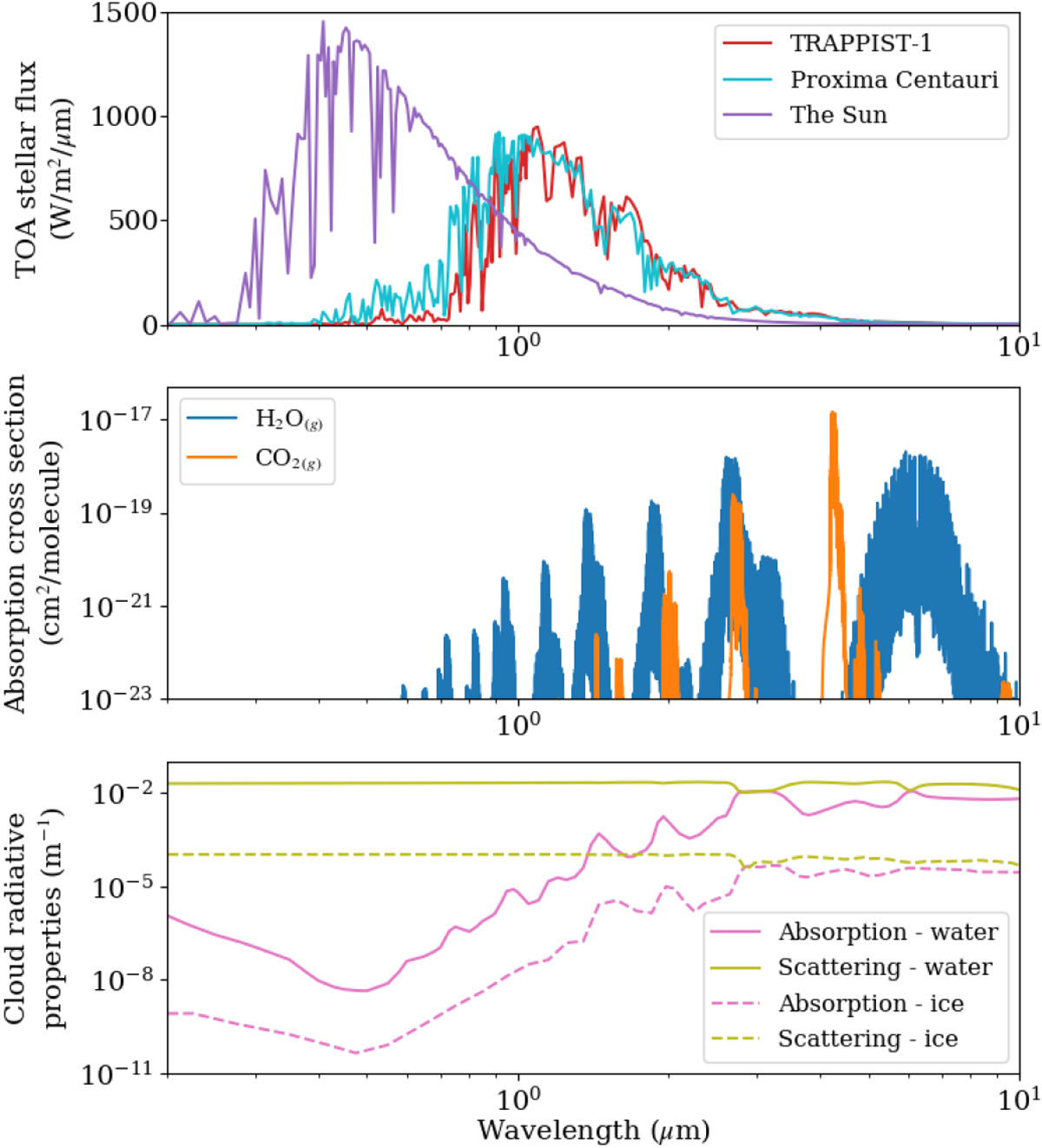Fig. 1

Download original image
Wavelength vs. stellar flux per wavelength (top), received at the TOA for a planet orbiting TRAPPIST-1 (red), Proxima Centauri (cyan), and the Sun (purple), with a fixed total stellar flux of 900 W m−2. Stellar profiles were created using the BT-settl model grid of theoretical spectra (Rajpurohit et al. 2013) with stellar parameters from Table 1. Middle panel: absorption cross section per molecule for water vapour (blue) (Polyansky et al. 2018) and carbon dioxide gas (orange) (Tashkun & Perevalov 2011) against wavelength. Absorption cross sections (centre) are for a pressure of ~800 hPa and an air temperature of ~230 K using the ExoMol (Tennyson et al. 2016)database, generated using ExoCross (Yurchenko et al. 2018). Also shown are the cloud absorption (pink) and scattering (green) rates for liquid water (solid) and water ice (dashed). These assume typical cloud droplet radii of 9 μm and 30 μm for a liquid and an ice cloud, respectively.
Current usage metrics show cumulative count of Article Views (full-text article views including HTML views, PDF and ePub downloads, according to the available data) and Abstracts Views on Vision4Press platform.
Data correspond to usage on the plateform after 2015. The current usage metrics is available 48-96 hours after online publication and is updated daily on week days.
Initial download of the metrics may take a while.


